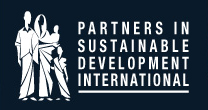ALL ABOUT BANGLADESH - 1ST IN A 3 PART SERIES
Since we’re focused on Bangladesh in our work, we thought we’d share information about this beautiful country with you. Bangladesh is a country that many Americans would be hard pressed to find on a map. However, it has a rich history and culture worthy of sharing and should not be forgotten.
Bangladesh is located in South Asia, sharing it’s western and northern borders with India, and has a population of 167 million people, which places it as the 8th most populous country in the world. However, when compared to U.S. it is only slightly smaller than the state of Iowa. Consequently, Bangladesh is also one of the world’s most densely populated countries. As an American, it’s hard to imagine how so many people can fit into that amount of space.
Water is an important piece of Bangladesh’s geography. As a tropical country, Bangladesh has a monsoon season during the summer and early fall. It is also home to many rivers, including the Ganges and the Brahmaputra. These rivers help to define the landscape of the country. Overall, Bangladesh contains 11,365 square miles of water, which, considering the country is only 57,320 square miles in size, is an impressive amount.
Most people who live in Bangladesh identify themselves as Bengali and speak Bengali, the official language of the country. Bengali has a completely different writing system, which looks like this, এই বাংলা। (Translation- This is Bengali.) Personally, I find their writing system quite beautiful. There are also many different influences on their language, from Islamic and Hindu connections and even English.
More than 85 percent of Bangladeshi people identify as Muslim with Hinduism being the next largest religion in the area. These religions have large influences of Bangladeshi culture. In particular, the Eid festivals are national holidays and are celebrated countrywide in Bangladesh.
Bangladesh is also a very young country with the median age being 27 years old. So overall, it is a country of youth. One of the important outcomes of our work with extreme poor families is to help ensure their children can have access to an education instead of working alongside their parents in the fields. We are working to help these youth take hold of their future and have the resources that they need to lead a productive life.
We hope that you have found this blog both interesting and useful. Stay tuned to our next blog and let us know what kind of blogs that you would like to see in the future!
(Source: CIA World Factbook)
Oliver Rodenbaugh, author of this blog, is a past Peace Corps Volunteer, working in Ukraine in 2020, and is currently pursuing his Masters in Social Work at University of Missouri (Mizzou) in Columbia, doing his practicum with PSDI.
